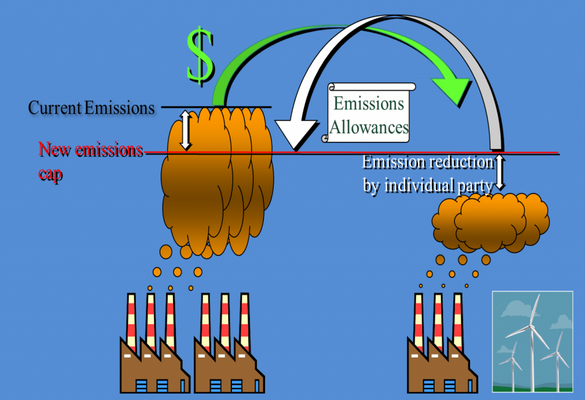
As part of today's Metro Board meeting, the Board of Directors passed a motion calling on the state's Air Resources Board to spend funds collected through the state's cap and trade program on sustainable transportation funding.
California’s cap-and-trade program is the state's primary strategy for reducing the State’s greenhouse gas emissions to meet emissions reduction targets as required by the state’s Global Warming Solutions Act. The largest portion of the state’s emissions comes from the transportation sector. Advocates, such as TransForm California and Move L.A. argue that for Los Angeles to achieve long-term emissions reductions, they will need sustained investment in expanding public transit, biking and walking, and ensuring affordable and transit-accessible housing.
Governor Jerry Brown's administration states that transportation must be one of the main areas in which cap and trade funds are invested. Brown and many environmentalists believe that these funds could be key for regions, and the state, to meet the goals set out by its landmark greenhouse gas laws SB 375 and AB 32. However, given Caltrans continued belief that expanding highways is a great way to reduce vehicle emissions, it is important that strict guidelines be in place for how cap and trade transportation dollars are spent.
The Metro motion doesn't go as far as the call made by advocates earlier this month for cap and trade funding standards for transportation. The motion follows guidelines put together by the Transportation Coalition for Livable Communities (TCLC). These guidelines include: revenue from "fuel auctions" should go towards transportation, county government bodies should have control over project selection, funds should fund cost effective and innovative projects, and all cap and trade funds should go towards projects that advance the state's greenhouse gas reduction goals.
While conceding that the TCLC (and Metro) platform is a good one, TransForm's Cap and Trade manager, Ryan Wiggins, explains the differences between his coalition's proposed standards and that of TCLC/Metro.
- TCLC is calling for money to be invested in road smoothing (maintenance) as a means to reducing GHGs. We don't see that as a good eligible expense and are pushing the concept that cap-and-trade auction revenues for transportation infrastructure only go into projects and programs that achieve VMT reductions through SB 375. We only see road maintenance as eligible as a part of complete streets projects.
- TCLC does not call for affordable housing near transit which we feel is critical since they have high ridership and also need affordable transportation and housing to get ahead
- We call for more focus on lower income Californians and TCLC doesn't have a real equity component
"It's encouraging to see LA Metro support dedicating greenhouse gas auction revenues for transportation projects that comply with Sustainable Communities Strategies," Wiggins continues.
"We hope that they will take the next step and state their support for focusing these revenues on transportation projects that provide real transportation choices including public transit, biking and walking, and affordable housing near transit. This approach, outlined in the Sustainable Communities for All Platform, is supported by more than 50 leading organizations that support investments that reduce automobile dependency and transportation costs and improve our health and economy long-term."
The potential amount of revenue that could be generated from this program is unknown at this time. However, the State estimates between $660M to $3B in revenue from 2012-2013 auctions, and up to $1 billion dollars annually during full auction years until 2020. California makes money off of fines when companies are over their Cap and Trade pollution levels and can't find another company to trade with.






